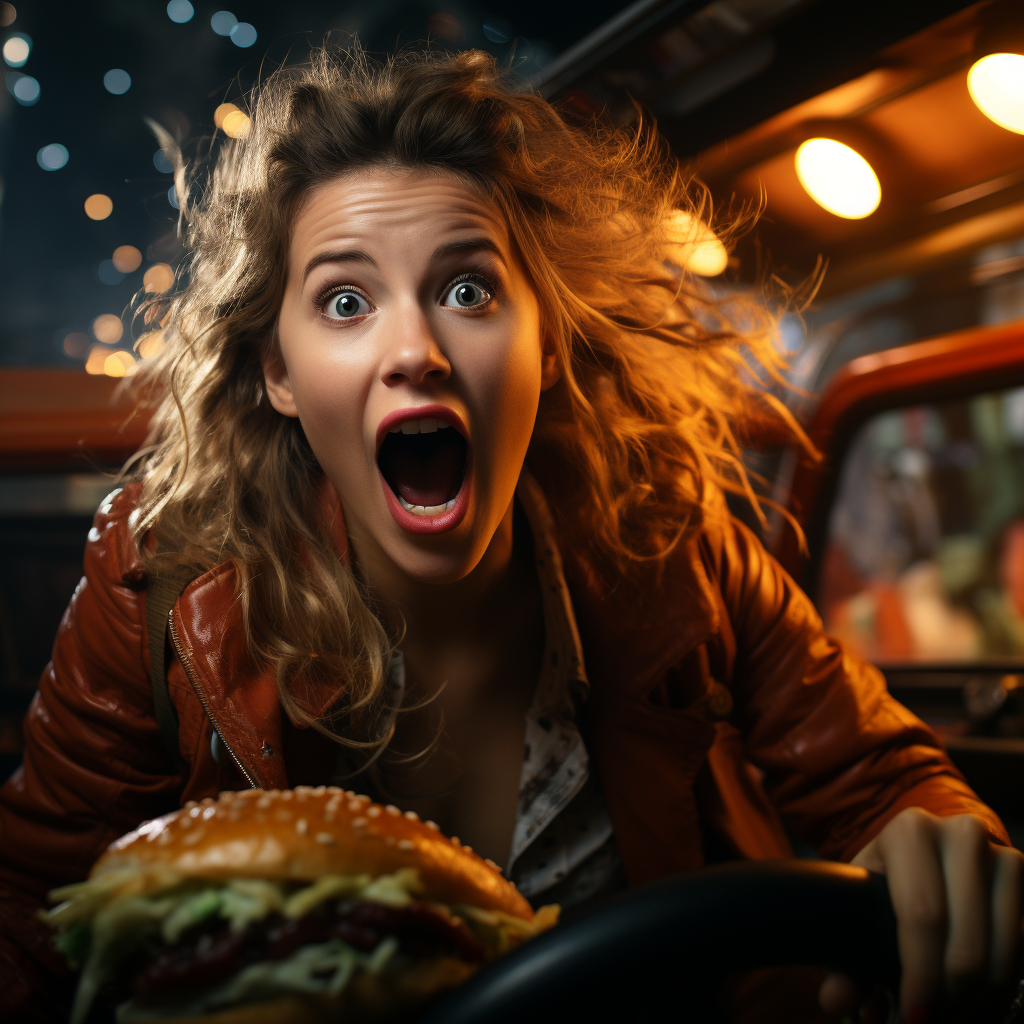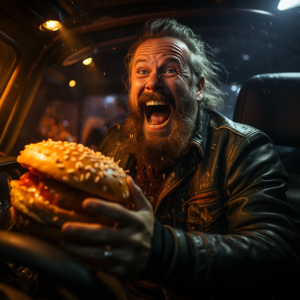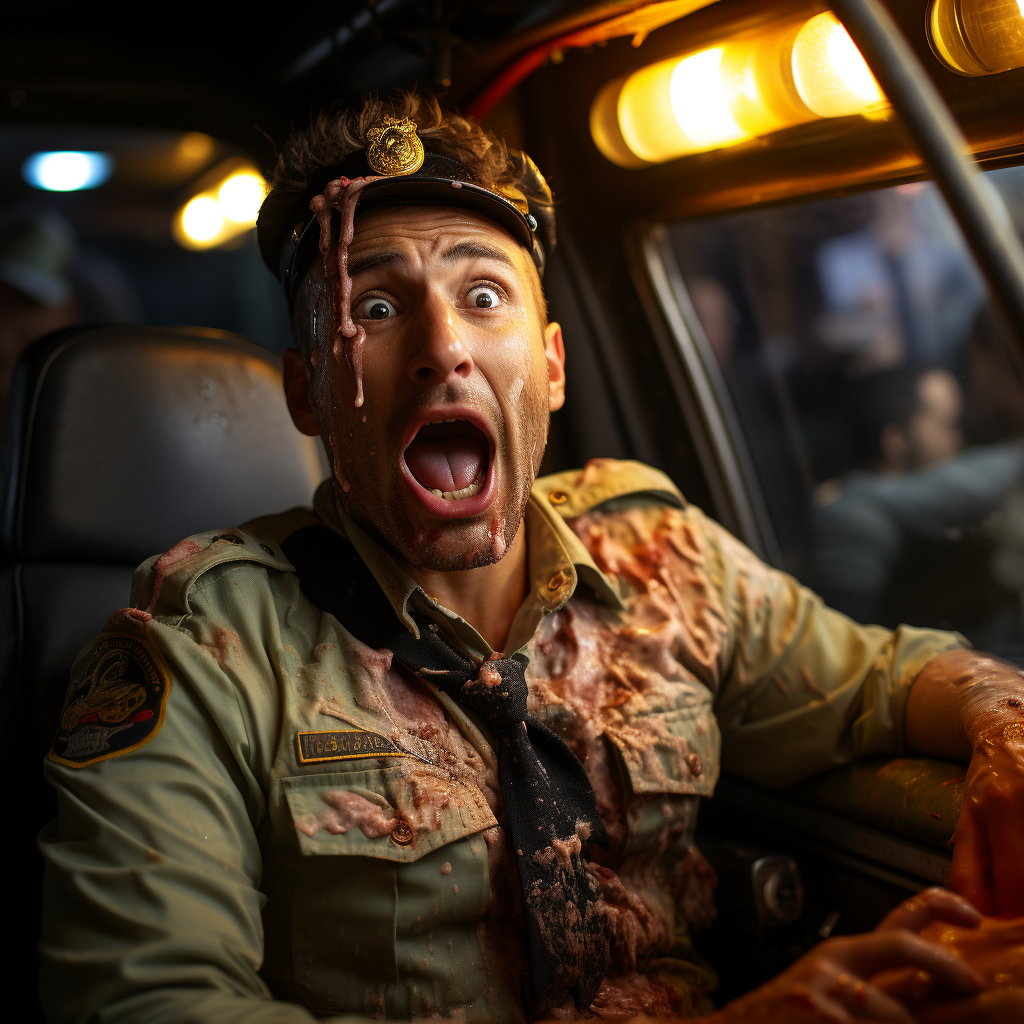In the state of California, the law does not explicitly prohibit activities like eating while operating a motor vehicle, despite the fact that these types of distractions can genuinely lead to a form of reckless driving. Much like someone checking their phone or adjusting the makeup in their rearview mirror, activities which distract drivers – including eating – could fall under the label of reckless behavior. In such cases, the distraction could lead to dangerous or willful disregard of other people’s safety, which might earn you a ticket if caught in the act.

So, while eating per se may not be illegal, causing a distraction at the wheel that could potentially result in unsafe or reckless behavior could lead to legal consequences. Just the way using your phone behind the wheel isn’t named as an illegal act, but the distraction that it causes could still land you with penalties. The legal control in these cases is often ambiguous, as the laws can be interpreted differently.
Contents
Understanding Distracted Driving
Definition and examples of distracted driving.
Under California’s specific state law, “distracted driving” is defined as any activity which diverts a driver’s attention away from the control of their motor vehicle, increasing the risk of an accident. There are many types of distractions that fall under this category. Examples may include using cellphones, eating and drinking in the car while driving, or talking with passengers while in-car entertainment/navigation systems are being controlled. Any device used during driving, like a phone or navigation system, increases the risk of an accident significantly due to the diversion of hands, eyes, and cognitive attention away from the road.
In the case of eating behaviors, whether they show willful or wanton disregard for the safety of persons or property is key. This falls under the definition of reckless driving under California Vehicle Code 23103. A conviction could result in up to 90 days in county jail as well as fines up to $1,000.
Eating while driving falls under the umbrella of distracted driving as defined by California law. This behavior can divert the driver’s focus and inhibit their ability to operate a vehicle safely, just as thoroughly as talking on the phone or operating other devices. Though not explicitly illegal, this behavior might still constitute reckless driving under the state’s laws if it leads to unsafe actions on the road.
The reckless driving laws in California cover various forms of distracted driving. The key components are intentional behaviors, conscious disregard, and total indifference. Intentional behaviors involve deliberate acts that increase risk; conscious disregard includes willfully disregarding potential dangers, while total indifference shows an irresponsible attitude to safety. These components are critical in the legal classification of actions like eating while driving.
Ubnderly, the fault-based auto insurance system of California considers negligence a decisive factor when determining liability in car accidents. In case of distracted driving due to activities like eating, negligence can refer to failing to act with reasonable care, leading to harm or damage.
What constitutes eating while driving as distracted driving?
Under Californian law, negligence refers to any failure of reasonable care that results in injury to either the driver or third parties, like distracted driving due to eating. Here, eating while driving could be seen either as negligence due to the unwitting lack of attention paid to the road or as recklessness due to deliberate disdain for the risks their actions present.
Yet, even without instances of eating while driving, problems can arise with California’s “Last Clear Chance” doctrine. This rule applies when drivers have one final opportunity to avoid an accident; if a distracted driver causes an accident and another had clear chances to prevent the collision but failed, both may share responsibility.
Safety should always be the first concern. If you find yourself in an accident, take necessary measures to ensure this like moving to an unhazardous area if needed and exchanging information with all involved. Always remember to document the scene using photographs and gather witness details for reporting purposes.
California Reckless Driving Laws (RDLs)
Consider consulting with an attorney when injuries or major damages have occurred, especially if significant costs have been incurred due to the accident.
Each step in this process is crucial for legal and insurance issues and to ensure everyone involved has a smoother experience after such incidents.
Negligence and Eating While Driving (EATD)
Under California’s fault-based auto insurance system, negligence plays an integral role in establishing liability in vehicle accidents. Negligence refers to failing to act with reasonable care in similar situations that leads to harm or damage; its presence helps establish responsibility in car crashes if distracted driving causes an incident such as an accident; for example eating while driving can make someone responsible and may incur financial liability as damages may have resulted from their action.
Under Californian law, negligence refers to any failure of reasonable care that results in injury to either themselves or third parties, like distracted driving due to eating. Recklessness refers to more deliberate disregard for safety; here the driver knowingly disregards risks their actions present and remains unaware. Eating while driving could fall either under negligent or reckless classification – whether unwittingly leading to lack of attention on their journey; or deliberately disdainful of risk their actions pose to themselves and others alike. Eating while driving could fall under either category depending on who bears liability in such instances – in either scenario it would fall either under negligent or reckless.
The Last Clear Chance Doctrine enunciates two elements.
As mentioned before, even if you weren’t the person eating while driving, problems may still arise. California law’s “Last Clear Chance” doctrine applies in instances when drivers have one final opportunity to avoid an accident; when applied to eating while driving incidents, this means if one driver becomes distracted while another had clear chances to prevent collision but failed, both may share responsibility; it also serves as evidence in negligence cases when both have contributed.
After an incident of eating while driving has taken place, appropriate actions to be taken include:
Safety should always come first when dealing with accidents; ensure this by taking measures like moving to an unhazardous area if necessary and exchanging information with all involved. Photographing and documenting the scene using photographs; gathering witness details for reporting purposes. Report the accident to law enforcement as soon as possible before seeking medical care as needed.
Consider consulting with an attorney when injuries or major damages have occurred, especially if there are injuries involved or significant costs incurred as a result of those damages.
Each step in this process is essential to legal and insurance issues as well as to ensuring everyone involved enjoys an optimal experience.




